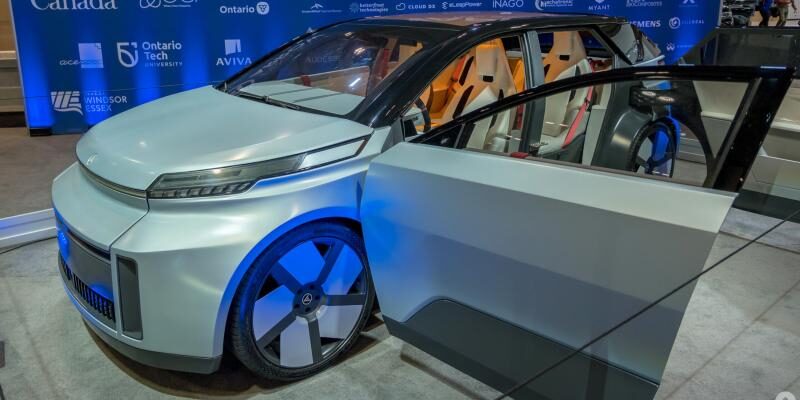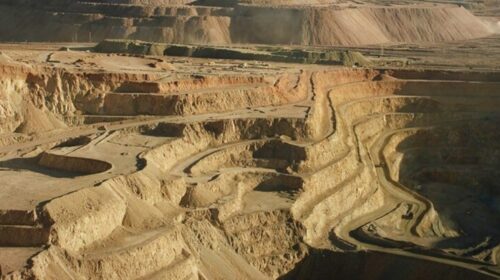Canada launches Eco-friendly EV with hemp and bio-composite Materials
According to Project Arro, Canada has launched the first full-build, zero-emission vehicle named Project Arrow. An all-Canadian effort, it will be designed, engineered and built through the joint efforts of our world-class automotive supply sector and post-secondary institutions.
Answering Prime Minister Trudeau’s call for a Zero-Emissions future by 2050, Project Arrow will bring together the best of the best of Canada’s electric-drive, alternative-fuel, connected and autonomous and light-weight technology companies.
There’s the 3D-printed chassis made from composite materials to act as both a sturdy and lighter frame. To improve aerodynamics, the team used carbon fibre panels and magnesium pillars.
They even used hemp for the backs reinforcing the seats. Bio-composite materials are also included where possible.
Albanian Minerals CEO Sahit Muja said, “The day has come for magnesium to become essential building blocks, driving green revolution by providing lighter alloys for auto, transportation and mobility market that include aircrafts, shipping, military equipment, agriculture , mining equipment , railroad train, buses, trucks to drone and bikes.
This business is now worth over $10 trillion USD. The future of transportation is 100% green, electric or hydrogen mobility. The future of all types of transportation is autonomous driving, the new area of drive autonomously has moved from the realm of science fiction to a very real solution”.
Mr. Muja added that; The revolutionary breakthrough in science and technology they will continue to shape our lives well into the future. Albanian Minerals is working 24/7 with the best minds in science and entrepreneurship to realize the goals and dreams of a better and greener world.
Hundreds of commercial drone and electric-vertical aircraft programs are driving advances in electric motors, power distribution, positioning systems, tele networking, and cockpit/mission systems.
Flying cars, or electric vertical-takeoff-and-landing (eVTOL). The autonomous emissions electric vertical aircraft using artificial intelligence to not only fly the aircraft safely in the air and around other airborne vehicles but also to take commands from its passengers as well. The AirCar is envisioned to be a completely autonomous AI all-electric eVTOL aircraft.
The magnificent Magnesium is revolutionizing entire industries with unmatched strong and light alloys. The aerospace industry has a long history of using magnesium in many applications both civil and military , in the manufacture of aircraft, rockets, and space satellites.
Magnesium is an ideal material : The weight reduction of all industrial products is of high importance, magnesium alloys are the lightest structural alloys .
Stainless magnesium, a group of scientists from the Helmholtz Centre in Germany have created an magnesium alloy with an exceptionally low corrosion rate , magnesium with tiny amounts of calcium.
Due to its low weight, high strength, abundance in the Earth’s crust and excellent electrochemical properties, magnesium is widely used in automotive, aerospace, electronic, biomedical and energy-storage applications.
The magnesium’s weight makes it attractive from a sustainable perspective on all application of all types of mobility. Magnesium is significantly lighter than aluminum, so replacing aluminum with stainless magnesium in cars and airplanes could reduce fuel consumption and carbon dioxide emissions.
The US Army Research Laboratory and the University of North Texas, has developed a magnesium alloy that has the potential to replace steel and aluminum alloys in the automobile, and many other industries.
The magnesium has the highest known damping capacity of any structural metal over 10 times greater than steel, titanium, or aluminum.
Sushanta Kumar Panigrahi, Associate Professor at Department of Mechanical Engineering, IIT Madras said; “The new alloy is not only strong, but also very ductile and that its superplasticity is achieved at higher strain-rates, which enables a reduction in the total costs, efforts, and the time taken to manufacture”.
Panigrahi said, “In addition to this, it is also lightweight, which helps lower the carbon footprint of vehicles. Lightweight vehicles need lesser fuel to run and are therefore more fuel efficient.
In view of the compelling needs for economical usage of scarce energy resources and ever-stricter control over emissions to lower environmental impact, automotive and aerospace industries are searching for alternative advanced lightweight structural materials to existing conventional materials.
Being one of the lightest and energy-efficient structural materials, magnesium alloys are potential candidates to replace steel and aluminum alloys in automotive and aerospace components since their density is two-thirds of aluminum and one-quarter of steel.”
Sahit Muja said, “Magnesium is building blocks for the future. Albanian Minerals is working with the best scientist’s teams globally to utilize over 40 billion tons of green high quality magnesium, the world’s largest magnesium resource.
Magnesium is the future metal: Lighter than aluminum, magnesium has the highest strength to weight ratio of all structural metals. Magnesium is abundant and very easily recyclable. Magnesium has replaced steel and aluminum in many application and is used extensively in alloys.
Magnesium can be cast into various mechanical parts and replace aluminum alloys for virtually anything you want to make lighter and stronger.
Fraunhofer Institute for Manufacturing Technology and Advanced Materials IFAM in Dresden have come up with an interesting new way to store and carry hydrogen energy, in the form of a magnesium hydride-based “Powerpaste” that stores the hydrogen in a chemical form, at atmospheric pressure, ready for release when needed.
It has a hydrogen capacity of about 10 mass-% (i.e. 10 kg POWERPASTE → 1 kg hydrogen). This is a specific energy of 1.6 kWh/kg and an energy density of 1.9 kWh/liter—about 10 times the capacity of Li-Ion batteries.
115 total views , 1 views today





